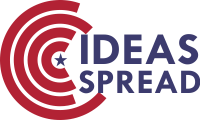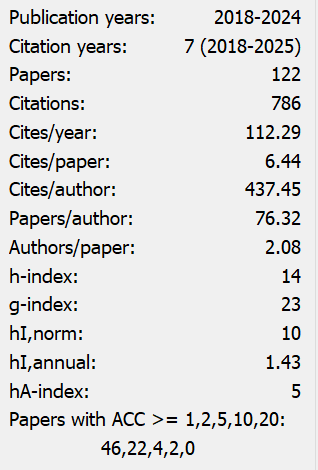The Role of Marketing in Understanding and Controlling Cost of Quality
Abstract
In the accounting realm, quality is an increasingly important element in planning, production, distribution and branding of goods and services because of global competition and other external factors in many industries. However, the cost of quality must also be considered as not to add unwanted or unwarranted costs to pass along to the end-customer. Marketing professionals are trained to strategically build and protect their own brand, which may consist of products or services. To achieve high-quality, it is imperative that the accounting and marketing departments work together. The four categories of Quality Costs (Prevention, Appraisal, Internal Failure and External Failure) encompass many different quality activities at different stages in producing goods or services. The research and experiences in the marketing industry based on branding will help to show that most quality initiatives are in fact preventative when the end goal is maintaining a solid consumer base and satisfied consumers. As this study shows, treating the brand as an experiential entity serves as a quality facet. This alludes that quality is a facet linking accounting and branding.
References
Anderson, S. W., & Sedatole, K. (1998). Designing quality into products: The use of accounting data in new product development. Accounting Horizons, 12, 213-233.
Carr, L. P. (1992). Applying cost of quality to a service business. Sloan Management Review, 33, 72-77.
Carr, L. P. (1995). How Xerox sustains the cost of quality. Management Accounting [USA], 77, 26-32.
Caruso, T. E. (1992). Kotler: Future Marketers will Focus on Customer Data Base to Compete Globally. Marketing News, 26, 21-22.
Cermakova, M., & Bris, P. (2017). Managing the costs of quality in a czech manufacturing company. Scientific Papers of the University of Pardubice. Series D. Faculty of Economics and Administration; Pardibuce, 41, 1-17.
Crosby, P. (1979). Quality is Free. New York: McGraw-Hill.
de Vries, L., Gensler, S., & Leeflang, P. S. H. (2012). Popularity of Brand Posts on Brand Fan Pages: An Investigation of the Effects of Social Media Marketing. Journal of Interactive Marketing, 26, 83-91. https://doi.org/10.1016/j.intmar.2012.01.003
Defeo, J. A., & Juran, J. M. (1998). Juran’s quality handbook: the complete guide to performance excellence. 5th edition. New York: McGraw Hill.
Durmaz, Y., & Sevil, Z. (2012). A Theoretical Approach to the Concept of the Costs of Quality. International Journal of Business and Social Science, 3, 83-86. https://doi.org/10.24297/ijct.v14i11.1810
Fetscherin, M., & Sampedro, A. (2019). Brand forgiveness. Journal of Product & Brand Management, 28, 633-652. https://doi.org/10.1108/jpbm-04-2018-1845
Fu, F., & Zhang, T. (2016). A New Model for Solving Time-Cost-Quality Trade- Off Problems in Construction. PLoS One, December, 1-15. https://doi.org/10.1371/journal.pone.0167142
Gatzert, N. (2015). The impact of corporate reputation and reputation damaging events on financial performance: Empirical evidence from the literature. European Management Journal, 33, 485-499. https://doi.org/10.2139/ssrn.2576627
Hill, R. C. (1993). When the Going Gets Rough: A Baldrige Award Winner On the Line. Academy of Management Executive, 7, 75-79. https://doi.org/10.5465/ame.1993.9411302351
Holm, E. (2011). Got a Crisis? Tap AIG (Really). The Wall Street Journal.
John, D. R., Loken, B., Kim, K., & Monga, A. B. (2006). Brand Concept Maps: A Methodology for Identifying Brand Association Networks. Journal of Marketing Research, 43, 549-563. https://doi.org/10.1509/jmkr.43.4.549
Keller, K. L. (1993). Conceptualizing, Measuring, and Managing Customer-Based Brand Equity. Journal of Marketing, 57, 1-22. https://doi.org/10.2307/1252054
Kirmani, A., & Zeithaml, V. (1993). Advertising, Perceived Quality, and Brand Image. In: AAKER, D. A. & BIEL, A. L. (eds.) Brand equity & advertising: Advertising's role in building strong brands. Hillsdale, NJ: Lawrence Erlbaum Associates Inc.
Kohnen, J. (2012). Onward: How Starbucks Fought for Its Life Without Losing Its Soul. Quality Management Journal, 19(2), 64-64. https://doi.org/10.1080/10686967.2012.11918349
Kotler, P., & Keller, K. L. (2016). Marketing Management, New Jersey, Pearson
Mizik, N. (2014). Assessing the Total Financial Performance Impact of Brand Equity with Limited Time-Series Data. Journal of Marketing Research, 51, 691-706. https://doi.org/10.1509/jmr.13.0431
Moon, H., & Han H. (2019). Tourist experience quality and loyalty to an island destination: The moderating impact of destination image, Journal of Travel & Tourism Marketing, 36, 43-59. https://doi.org/10.1080/10548408.2018.1494083
Moorman, C., & Rust, R. T. (1999). The role of marketing, Journal of Marketing, 63, 180-197. https://doi.org/10.2307/1252111
Mungin, Lateef & Morgenstein, Mark. (2013). “Carnival cruise line in more troubled waters.” CNN.com. Cable News Network. Retrieved from http://www.cnn.com/2013/03/15/travel/carnival-problems/index.html
Pasquarelli., A. (2018). “WELLS FARGO RAMPS UP MARKETING IN PUSH TO REGAIN TRUST.” 13 October 2016. Retrieved May 27, 2018, from http://adage.com/article/cmo-strategy/wells- fargo-ramp-marketing/306303/
Pine, B. J. I., & Gilmore, J. H. (1998). Welcome to the experience economy. Harvard Business Review, 76, 97-105.
Quality. (2013). Merriam-Webster.com. Merriam-Webster, 2013. Web. 16 April 2013.
Rust, R., Zahorik, A. J., & Keiningham, T. J. (1995). Return on quality (ROQ): Making service quality financially accountable. Journal of Marketing, 59, 58-70. https://doi.org/10.2307/1252073
Schmitt, B. (1999). Experiential marketing. Journal of Marketing Management, 15, 53-67. https://doi.org/10.1362/026725799784870496
Semple, E. (2009). Update Your Crisis Comms Plan with Social Media. Strategic Communication Management, 13, 7-7. https://doi.org/10.26226/morressier.5b0445aaa874c6001b34eba3
Sower, V. E., & Quarles, R. (2003). Cost of quality: why more organizations do not use it effectively. In: ANON, eds. Proceedings of Annual Quality Congress, 2003 Milwaukee, WI. American Society for Quality, 57, 625, 637.
Wells Fargo settles shareholder lawsuits for $480 million. (2018, May 4). Retrieved May 27, 2018, from CBS News https://www.cbsnews.com/news/wells-fargo-settles-shareholder- lawsuits-for-480-million/
Wiedmann, K. P., Hennigs, N., Schmidt, S., & Wuestefeld, T. (2011). Drivers and Outcomes of Brand Heritage: Consumers' Perception of Heritage Brands in the Automotive Industry. Journal of Marketing Theory and Practice, 19, 205-220. https://doi.org/10.2753/mtp1069-6679190206
Wiesendanger, B. (1993). Deming's Luster Dims at Florida Power & Light. Journal of Business Strategy, 14, 60-61. https://doi.org/10.1108/eb039590

This work is licensed under a Creative Commons Attribution 4.0 International License.
Copyright for this article is retained by the author(s), with first publication rights granted to the journal.
This is an open-access article distributed under the terms and conditions of the Creative Commons Attribution license (http://creativecommons.org/licenses/by/4.0/).


























